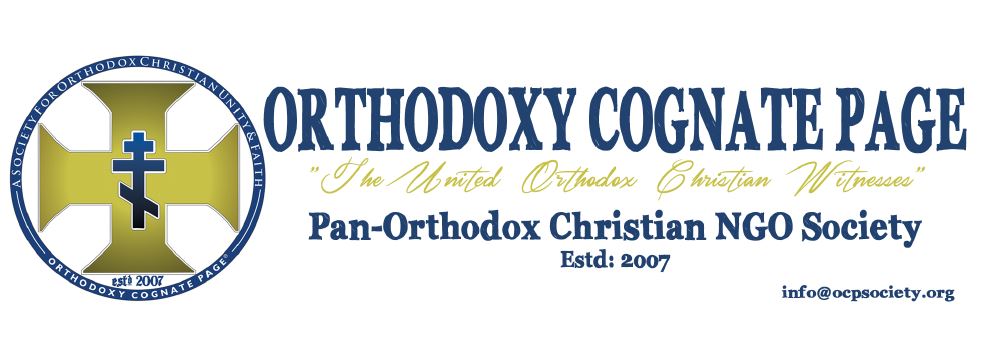High Level Coptic Orthodox delegation pays historic visit to the Monastic Republic of Mount Athos
Kisha D Dorad ( OCP Delegate of Serbia, Balkans and East European Region)
OCP News Service – 28/5/14
Pan-Orthodox Unity
Athens: With the blessings of Pope Tawadros II a high level delegation of the Coptic Orthodox Church of Alexandria and All Africa made a historic visit to the holy monastic republic of Mount Athos on 25th of May 2014. Archimandrite Ephrem President of the Vatopedi monastery “burning Bush” in northern Greece and Mount Athos received the delagation of the Coptic Orthodox Bishops.
The Coptic delegation was led by Bishop Anba Paulose of Athens and all Greece and included Bishop Julius of Ancient Egypt, Bishop Anba of the Eastern headquarters, Bishop Makary of South Shubra and other prelates.
Detailed discussions on Coptic Monasticism and Eastern orthodox monastic traditions took place. Also the current situation of the life of Coptic Christians in Egypt were also discussed. Special greetings to Pope Tawadros was send by the Abbots in Mount Athos.
The Delegation also met with Archbishop Ieronymos II of Athens and All Greece who is the primate of the Church of Greece. The Coptic delegation communicated greetings of love from Pope Tawadross to the Church of Greece and in return special message of greetings was conveyed by Archbishop Ieronymos to Pope Tawadros II.
Source:
OCP News Service









[…] High Level Coptic Orthodox delegation pays historic visit to the Monastic Republic of Mount Athos. News […]
A STORY
Byzantine tradition is an integral part of the European heritage;Byzantium was as much as European as it was Asian and North African. The early emperors sought to maintain the cosmopolitan character of the empire by actively promoting Egyptian, Syrian, Armenian, Chaldean, and other Asian-African cultures as well as the dominant and all-pervasive Hellenistic culture.
In the Byzantine Empire(330-1453), Eastern Orthodox Christianity was the cement of the empire as
well as its spiritual foundation, but the church was driven inside with acute cultural conflicts, mainly between the Hellenist s and the Asian-Africans, despite heroic efforts by Byzantine Emperors to keep them from breaking up and the empire.
Around the middle of the fifth century, the theological hairsplitting centered around the issue
whether Christ, who was both God and Man, had two natures(divine and human) or one united divine-human nature. The Hellenist s generally held to the two-nature formula, while most of the Asians and Africans preferred the one united-nature view.
Emperor Theodosius’s elder sister, Pulcheria, who had been regent during the boyhood of the emperor exercise great power and influence and was the main support for the Hellenist party. The empress, Theodosius’s wife, on the other hand, who never got along with Pulcheria, supported the more cosmopolitan and pluralistic view of culture, and upheld the cause of the Asians and Africans over against the Hellenists.
A conspiracy, scarcely dwelt upon by European historians, ensued. Pulcheria was in constant touch with the Pope of Rome, Leo 1, whose ambition was to set up the papacy as the supreme authority in the Christan church- an ambition which not only Asian-African Christians, but also Greek Christians stoutly resisted. The alliance of Pulcheria and the pope was really an alliance between Latins and Hellenist s against the Asians and the Egyptians for cultural domination.
What was the net result? The Byzantine and Latin churches, as well as Europe as whole, paid a
very heavy price indeed in subsequent history. They had completely alienated the peoples of Asia and Africa; when a couple of centuries later, another Asian religion with no Greco-Latin domination arose, West Asians and North Africans were able to welcome Islam as liberation from European domination. During those two centuries and for some time after, Hellenistic Christians oppressed,
tortured, and persecuted those Asian and African Christians who were not willing to be totally Hellenized.
The Syrian Orthodox Church of Antioch, the Syrian Orthodox Church (Malankara Orthodox-Jacobite) of India , The Armenian Orthodox Church (3 Asian churches) , The Coptic Orthodox Church(Egypt), The Ethiopian Orthodox Church, The Eritrean Orthodox Church (3 African churches) are the real survivors who were neither Latinized nor Hellenized. Some or major portions of the Asian and African churches are colonized and Latinized by the Latin Catholic Church during the European invasion to Asian-African Countries during and after the fifteen century A.D.
They are currently known as Oriental Catholic Churches.
But the Byzantine Empire suffered both ways. They lost the friendship of the Asians an Africans
who had made their culture what it was. Almost five centuries later, the Latin and Franks sought to exclude the Byzantine heritage from the new European Christendom that Charlemagne was crowned as the first Holy Roman Emperor by Pope Leo III. Eventually, the Franco-Latins of Europe also turned hostile. And with that began the creation of a Europe that consciously sought to be Franco-Latin, rather than Roman. The Roman Empire of the Caesars was heavily Greek affair, and Asian and African cultures flourish in it. The Greek language has been the language of culture
for Europe. But with Charlemagne, Latin takes over almost completely.
[…] The press release and pictures. […]
[…] (OCP) – With the blessings of Pope Tawadros II a high level delegation of the Coptic Orthodox […]
[…] Reported on May 28, 2014 (Source: ocpsociety.org) […]
[…] Источник […]
[…] | ocpsociety.org […]
285145 279877really good put up, i surely love this web website, carry on it 111723